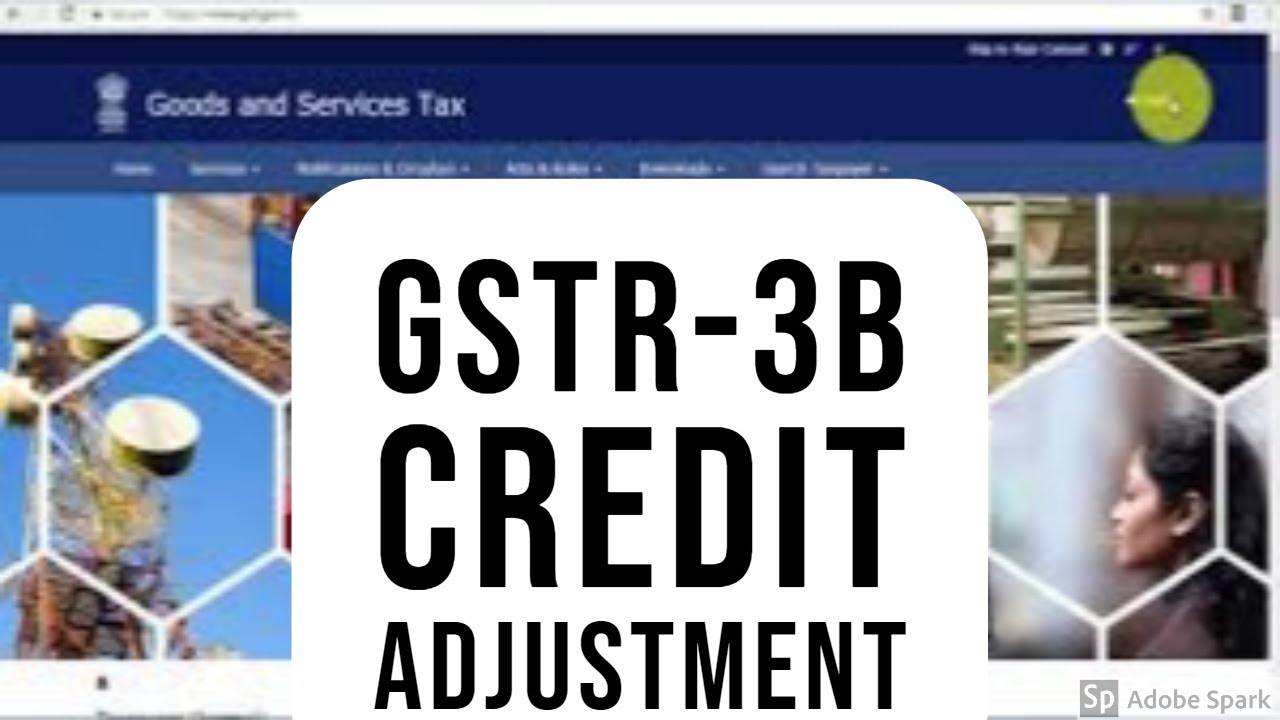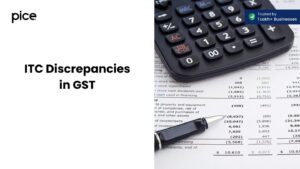Step-by-Step Guide to Adjust Credit Notes in GSTR-3B Filing
- 24 Aug 24
- 9 mins

Step-by-Step Guide to Adjust Credit Notes in GSTR-3B Filing
Key Takeaways
- Definition and Purpose: A GST credit note is issued to correct or reduce the output tax liability due to errors in the original tax invoice, such as overstated value or tax.
- Issuance Requirements: A credit note must include specific details like supplier and recipient information, original invoice details, and the credit amount, as per GST Rule 53(1A).
- Adjustment Process in GSTR-3B: To make changes to a credit note, lower the taxable value and output tax liability in GSTR-3B's Table 3.1 so that the changes are correctly reflected.
- ITC Reversal: Credit notes received should be reflected in GSTR-2A, and ITC should be reduced rather than reversed, as per Section 34 and Rule 73 of the CGST Rules.
- Compliance and Reporting: Accurate adjustment of credit notes ensures compliance with GST regulations, minimizing errors in tax liabilities, and maintaining smooth business operations.
The law has become complicated due to the frequent changes that have been made to it in the past years. In GSTR-3B, the taxpayers have to make a consolidated return of both the inward and outward supplies. If you are a GST-registered person and are unsure about how to adjust a credit note in GSTR-3B, this guide is tailored for you. In this blog, you will understand the concept of credit notes and learn the steps to adjust them within the GST return using the GSTR-3B form.
Credit Note Under GST Circumstances

A GST credit note is a document that is used by a registered person under the GST regime to make a correction or reduce the output tax liability because of mistakes or omissions made while preparing the tax invoice. It includes information about the original invoice number, the amount of credit given and the cause of the credit note. The GST law also specifies some conditions under which a registered supplier may issue a credit note. These include:
- The actual value of the supply is less than what was stated in the original tax invoice.
- The tax charged in the original tax invoice is higher than the applicable tax on the supply.
- The recipient returns the goods supplied.
- The goods or services supplied are found to be deficient.
To better understand the concept of a credit note, let us take an example. Suppose a supplier issued an invoice for ₹10,000, but the actual value of the goods supplied was only ₹8,000. The supplier would issue a credit note for the difference of ₹2,000 to adjust the output tax liability.
What Is the Process to Adjust Credit Note in GSTR-3B?
According to Section 34(1) of the CGST Act, the issuance of credit and debit notes is done by the supplier when the taxable value or tax charged in the original tax invoice exceeds the actual taxable value or tax payable. Issuing a credit note will affect certain parts of Form GSTR-3B. First, it will lower the GSTR-3B taxable value, which means the total value of your outward supplies will decrease. Second, there will be a reduction in outward tax liability.
If you want to know how to adjust a credit note in GSTR-3B, follow the steps mentioned below:
Step 1: Issue Credit Note
The supplier who issues a credit note for a supply of goods or services must make a declaration of credit note in their GSTR-3B return for the month in which the credit note was issued. As per GST Rule 53(1A), a credit note should include:
- Supplier's name, address and GSTIN.
- Buyer's name, address, and GSTIN, or Unique Identity Number.
- Recipient’s name and address, including State and State Code, if unregistered.
- Consecutive serial number and date of issuance of credit note.
- Corresponding tax invoice number(s) and date(s).
- Taxable value, rate of tax and the amount credited.
- Supplier’s signature or digital signature.
Step 2: Reflect GST Returns
The credit note must be reflected in the GST annual returns by the month in which it was issued. This declaration must be done post-30th September of the following financial year or the date of filing the annual return, whichever is earlier. It is important to remember that the incidence of tax and interest has not been passed on another person.
Step 3: Adjusting in GSTR-3B
Issuing a credit note will reduce the taxable value and, consequently, the output tax liability GSTR-3B does not have a separate column for credit notes; therefore, you have to make the adjustments in the existing columns of Table 3.1.
- Outward Supplies (Table 3.1(a)): If the credit note is issued to correct an error where the taxable value was initially overstated, subtract the corrected amount from the total taxable value shown in Table 3.1(a).
- Excess of Tax Liability: If the credit note corrects an excess payment of taxes, subtract the adjusted tax amount from the tax value shown in Table 3.1(a).
Credit Note in GSTR-3B Filing Form Adjustment

Let us continue with the earlier example and understand the adjustment of credit note in the GSTR-3B filing. Assume the total taxable value for the month is ₹1,00,000 and the issuance of GST credit note is ₹2,000 during that tax period. The adjustment will be made as follows:
3.1 Details of Outward Supplies and Inward Supplies liable to reverse charge in GSTR 3B
| Nature of Supplies | Total Taxable Value |
| (a) Outward taxable supplies (other than nil rated, zero rated, and exempted) | ₹98,000 |
In the total taxable value column, the amount will be calculated by subtracting the credit note amount (₹2,000) from the initial total taxable value (₹1,00,000), resulting in the adjusted figure of ₹98,000.
ITC Reversal for Credit Notes in GSTR-3B – What if Net ITC Is Reported Directly in GSTR-3B?
During GST Department audits, it has been noted that the department is requiring taxpayers to reverse Input Tax Credit (ITC) related to credit notes if the ITC has been reported as a net amount by the recipient instead of being listed separately in Table 4(B)(2) of the Form GSTR-3B.
Reduction of ITC by Recipient:
When it comes to reducing Input Tax Credit (ITC) for credit notes, the CGST Act mandates that you, as the recipient, must comply with this requirement. Here is how you have ensured adherence to the law:
- You have reflected all credit notes received in your GSTR-2A.
- You possess copies of these credit notes.
- You also have corresponding invoice copies for which credit notes were issued.
Section 34: Casts Responsibility of Reporting Credit Note on Supplier:
Section 34 of the CGST Act outlines the circumstances under which credit notes must be issued, along with the time limits for doing so. This section shifts the burden of reporting of credit notes to the supplier, and the supplier shall furnish the details of such credit note in the return for the month in which such credit note has been given. It does not require the recipient to disclose such credit notes.
Moreover, Rule 73 of the CGST Rules specifies that the recipient should ‘reduce’ the Input Tax Credit and not reverse it. Similarly, Subsection (3) of Section 43 originally used the term 'reduction' in relation to ITC by the recipient, although this section has been omitted by the Finance Act 2022, eliminating the concept of matching, reversal, and reclaiming of ITC.
According to the information flyer released by the CBIC, it focuses on the word ‘reduction’ rather than ‘reversal’. Hence, you should reduce the Input Tax Credit for credit notes received from the eligible ITC as per your books of accounts. Make sure to report the net ITC correctly in your GSTR-3B report.
Matching, Mismatching and Reversal Mechanism
The mechanism for matching, mismatching and reversal applied to GSTR-1, GSTR-2 and GSTR-3, which were not accessible on the portal. If these returns had been available as required by law, they would have prevented such issues.
the law.eporting input tax credit net of ITC adjusted for credit notes, there is no loss of revenue to the Government. You must note this update is provided for informational purposes only and does not constitute advice or opinion. It is based on the interpretation of applicable provisions as of the current date.
Conclusion
Overall, understanding how to adjust a credit note in GSTR-3B is crucial for complying with GST regulations effectively. By following the steps outlined in this guide, you can accurately reflect credit notes in your GSTR-3B filing. Moreover, you can effectively manage your tax liabilities and maintain seamless business compliances with GST laws.
💡If you want to pay your GST with Credit Card, then download Pice Business Payment App. Pice is the one stop app for all paying all your business expenses.


















